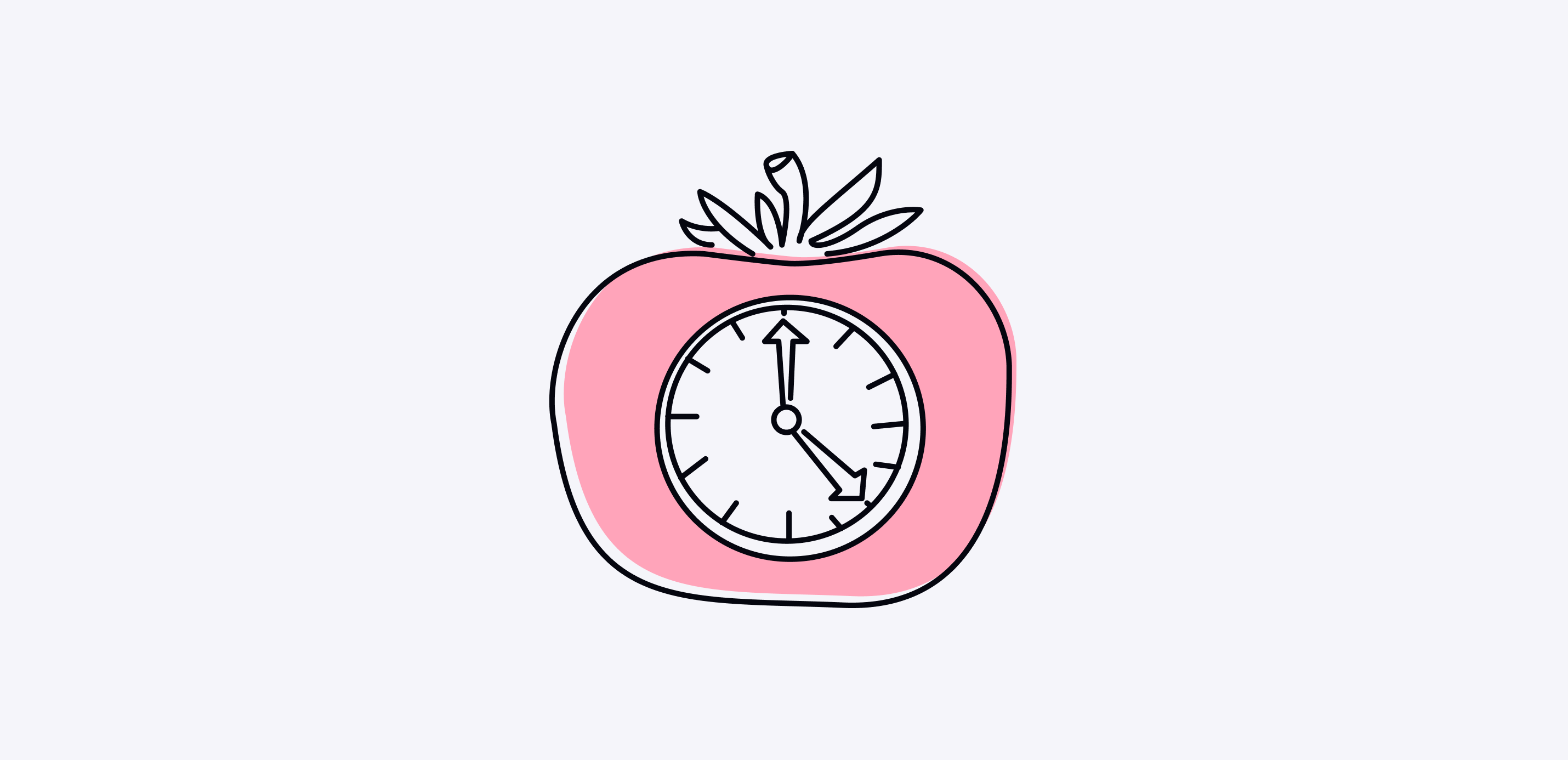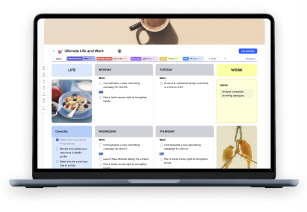Staying on top of things and managing time effectively has become a very important part of our skill. With so many different ways of doing it, it seems like there’s too much choice around how to get on top of your work and manage time efficiently.
From the popular Pomodoro and Getting Things Done (GTD) to less known like the Eisenhower Matrix and Eat That Frog, these are the 7 productivity methods that will help you put tasks in the right order, conquer your to-do list, and ultimately help you be more productive.
Join us as we explore the world of productivity techniques, from the widely acclaimed GTD method to lesser-known but equally effective approaches. Discover the method that will empower you to conquer your task list, prioritize your most important tasks, and ultimately unlock your full potential for productivity and personal development.

How to choose your one and only productivity method?
With so many productivity methods out there, it can be tempting to try them all in the hopes of finding the perfect system. However, jumping from one method to the other continuously could turn out to be counterproductive in the long run since it would mean that no consistency is accorded. The solution is to find that one approach to productivity that will fit both your work style, individual tasks, and goals, and stick with it.
Determine your style and habits
First, be really honest with yourself. Take an inventory of what you’re doing now, both the good and the bad. Are you one of those people who easily get lost in the labyrinth of their mind and can’t concentrate on doing one thing at a time? The Pomodoro Technique will appeal to you with its focused sprints of work and rests. Do you feel overwhelmed by a never-ending to-do list? Consider the GTD method, which helps you classify tasks and prioritize the most important ones.
For visual people, a personal Kanban board can serve as a powerful visual reminder of your progress and current commitments. If you thrive on tackling the hardest task first thing in the morning, the “Eat That Frog” method might be the one for you.
Although this prioritizing between important and urgent sounds hard to actually put it into practice in the “real world” when scheduling your daily tasks, the Eisenhower Matrix provides a simple system for your to-do list to only be divided into three categories: urgent and important, not urgent but important, and not important.
Stay consistent with your productivity method
Whichever productivity method will click with your work style and needs, it is important that you put the same into consistent implementation. Trying out a new technique for some days and then abandoning it will not lead to lasting productivity improvements. Commit to the new regime for at least several weeks, or even a month, so that you have a real chance to introduce some new habits into your life and become accustomed to the new system.
Now, the right productivity method is one that allows you to focus on your most important tasks – your priorities, in other words and actually manages your levels of energy throughout the day. It should work for you like a tool that empowers you, not overwhelms you with extra stress. If you try a method out to your best of knowledge and see that it doesn’t work for you, don’t be afraid to re-evaluate and try another approach.
Ultimately, sustainable productivity is finding a method that fits into your work style and routine like a hand to a glove – one that allows you to unabatedly, from day to day and week to week, make progress on your goals and experience the satisfaction of ticking things off your to-do list and achieving personal development milestones.
Understand the principles behind all these methods of productivity to be able to make out which one would suit your work style and goals as an individual best. In one form or another, this strong productivity method guide is going to arm you with the tools that you’ll need to take back control of your time, developing new habits that will allow you to reach your goal.
So, let’s go through 7 of the most popular productivity systems to find the one that will do.
1. Pomodoro technique

The Pomodoro technique is is one of the popular productivity methods or time management that helps people enhance their concentration and efficiency by dividing their work into intervals separated by short breaks.
The method is termed “pomodoro” after the tomato-shaped timer (“pomodoro” in Italian) that Francesco Cirillo had used during the ideation of his system.
How to use the Pomodoro technique
- Work intervals (pomodoros): Work through something very specific or particular without distractions or interruptions for 25 minutes.
- Five-Minute Break: After every 25 minutes of the working session, you shall take a five-minute break to allow for relaxation.
- Longer Break: Take a 5-minute break followed by a 25-minute work interval, but after every third break, take a longer 15-30 minute break. Repeat this cycle three more times.
Pros of using the Pomodoro technique
Improved focus: One will be able to have improved focus on one task at a time with the Pomodoro Technique, therefore reducing distractions that lower productivity.
Time management: By breaking work into manageable intervals, you can better manage your time and avoid feeling overwhelmed by large or daunting tasks.
Built-in breaks: Regular five-minute breaks help ward off burnout and keep your energy consistent throughout the day.
Flexibility: This approach is highly flexible, as it can be modeled to any kind of task and flexible work environment, hence suitable for more than one productivity style.
Cons of using the Pomodoro techniques
Strict time constraints: Some individuals may find the strict 25-minute work intervals and five-minute breaks too rigid or challenging to follow consistently.
Task interruption: Some tasks require longer periods of uninterrupted focus, hence maintaining the Pomodoro cycle becomes practically impossible.
Learning curve: It may take some practice to get the user fully adapted to the Pomodoro Technique and in the habit of working in focused bursts.
Overall, the Pomodoro Technique can be an effective productivity system for individuals who tend to procrastinate, get overwhelmed while taking on tasks, or keep poor focus abilities. Its structured method and built-in breaks could just possibly improve productivity and time management. Of course, like any productivity method, you may find it doesn’t resonate with your work style or preferences. It may take a little tweaking for you to make this one hum.
2. Getting Things Done (GTD) method
%20Method.webp)
Getting Things Done (GTD) is a comprehensive productivity system developed by productivity consultant David Allen. It helps individuals better manage their tasks, commitments, and information overload.
How to use the GTD method
- Capture: Collect all the tasks, ideas, and commitments swirling around in your mind into some kind of safe and trustworthy system – whether it be a notebook or a digital app.
- Clarify: Process each item by deciding if it’s actionable, and if so, determine the next specific action required.
- Organize: Categorize your action items into appropriate lists or contexts (e.g., errands, calls, projects).
- Reflect: Review your lists regularly to keep your system up-to-date and prioritize your tasks.
- Engage: Focus on the right task at the right time, using your prioritized lists as guides.
Pros of using the GTD method
Stress relief: GTD captures all your tasks and commitments, taking away the mental burden of trying to remember it all.
Increased productivity: The system offers a clear-cut list of actions and a task list, which makes it much easier to concentrate on the most important things and their urgency.
Adaptability: The GTD method is adaptable to a wide array of work styles and environments.
Comprehensive: GTD addresses not just task management but also email, information management, and overall productivity.
Cons of using the GTD method
Initial setup: GTD system takes huge time in implementation and requires huge upfront investment in terms of efforts.
Maintenance: Keeping up with the capturing, processing, and reviewing tasks system is something GTD requires for effectiveness—probably a bit too mechanistic for some.
Complexity: The GTD system can get complex with multiple lists and contexts; therefore, it could not work for people who prefer a simpler method to productivity.
Learning curve: Understanding GTD and how to implement it in full in one’s life requires a substantial learning curve, at least for beginners to the system.
In summary, the Getting Things Done method is a good approach for persons who may feel overwhelmed by a multiplicity of their commitments and be incapable of setting priorities for some of the tasks. It will, in fact, help such people develop a very reliable system in terms of capturing and organizing tasks, thus increasing their level of focus and productivity. That said, some users may find the initial setup and following maintenance to be a bit high-maintenance in relation to their work style or tastes.
3. Eat the frog method

The “Eat the Frog” approach is a simple yet very effective productivity method; it encourages one to do the most difficult or significant task first, before dealing with other items on your to-do list. The origin of the name is from a quote by Mark Twain: “If it’s your job to eat a frog, it’s best to do it first thing in the morning. And if it’s your job to eat two frogs, it’s best to eat the biggest one first.”
How to Use the Eat the Frog Method:
- Identify the “Frog”: As you start your day or a specific time that you plan to work, identify the most important, difficult, or dreaded task on your to-do list. This is called your “Frog.”
- Eat the Frog first: It was a bit daunting since, in particular, these important tasks needed to be done first before moving on with other tasks or getting distracted.
- Complete the Frog: Work on the task as diligently as a frog until it’s fully completed, without allowing yourself to get sidetracked.
- Repeat: Once the “frog” is eaten, move on to the next important task on your list, and so on, until all your priorities for the day are complete.
Pros of Eat the Frog method
Increased productivity: With the most important tasks out of the way first, when one has the most energy and focus, this will set him up to be highly productive throughout the day.
Reduced procrastination: They reduce the chances of one giving in to the tendency to procrastinate, as they eliminate the temptation to delay undertaking important tasks.
Sense of accomplishment: Getting the one task you were probably dreading most out of the way, or doing one that’s most complex and difficult first thing in the morning, means you would have already achieved something by 9 a.m., even if it’s just one thing.
Reduced stress: Getting your most important task done means reduced stress, and you can work with laser focus on other tasks without constant reminders of what needs to be done.
Cons of Eat the Frog method
Difficulty identifying the “Frog”: This is relatively subjective, and which task is really the most challenging and important may require some practice.
Not suitable for all kinds of tasks: In some cases, certain tasks may require a specific order or have prerequisites, which makes it impracticable to always apply the hardest-first approach.
Potential burnout: Doing the most difficult tasks first, one after the other, with not much diversity or time-out built in over a period of time may be a formula for eventual burnout.
Inflexible: The approach does not accommodate people who would be very flexible or spontaneous about how their day of work unfolds.
The “Eat the Frog” method is simple but can help people who experience procrastination increase their overall productivity. Emphasis on the most difficult or important job first may give some kind of sense that something has been achieved, thus lowering stress for the rest of the day. The right balance, however, should be maintained in its application and not be too rigid, because in effect some tasks may require a different approach or order of completion.
4. Eisenhower Matrix

The Eisenhower Matrix is one simple but very useful way to human helper in sorting tasks according to their urgency and importance. The matrix is named after the former U.S. President Dwight D. Eisenhower, who used this principle of decision-making for running his heavy workload. The matrix is broken down into four quadrants:
- Urgent and important: These are tasks that demand a person’s immediate attention, including important deadlines, emergencies, or projects of very high importance.
- Important but not urgent: These are the tasks that stay very important but not of the likes of strategic planning, professional development, or long-term goals.
- Urgent but not important: These types of tasks are those which obviously do not seem to be demanding immediate action but, in reality, contribute less or do not contribute at all to your goals or priorities. This may include telephone interruptions, trivial conversations, and some emails.
- Not Urgent and not important: These are activities that are not bounded by time, and at the same time, they do not lead to any crisis, like watching television or something that is trivial.
How to use the Eisenhower Matrix
- List tasks: Make a comprehensive list of all the tasks, projects, and commitments you have.
- Categorize tasks: Evaluate each of these tasks and categorize them under any of the quadrants of an Eisenhower Matrix, depending on what is considered important and urgent.
- Prioritize: Focus your efforts on the “Urgent and Important” quadrant, as these tasks demand immediate attention.
- Schedule: Allocate time for the implementation of “Important but Not Urgent” tasks since it is a contribution to your long-term goal and priority.
- Delegate or eliminate: Delegate or eliminate tasks from the “Urgent but Not Important” quadrant if possible, as these tasks can often be distractions.
- Avoid: Delegate or get rid of the things in your “Urgent but Not Important” quadrant, since these are the sorts of things that usually amount to interruptions.
You can use the xTiles Eisenhower Matrix Template for quick and efficient tasks’ prioritization.
Pros of using the Eisenhower Matrix
Clear prioritization: The matrix presents clear groups in which to fit different tasks based on their importance and urgency, hence enabling one to concentrate on what really matters.
Improved time management: You are better poised to improve your time management if you can assist in setting out your priorities in the execution of those important activities.
Goal alignment – in that the matrix encourages you to focus on those few but very critical activities that lead to the achievement of your long-term goals and priorities.
Reduced stress: It can lower the stress brought by too many workloads and even possible burning out because you can finally eliminate or delegate those unimportant tasks.
Cons of using the Eisenhower Matrix
Subjectivity: Determining the importance and urgency of tasks can be subjective, and individuals may prioritize tasks differently.
Inflexibility: The rigid framework of the matrix is prone to some tasks not fitting perfectly into one quadrant, but they may require more nuanced decision-making.
Oversimplification: The matrix has a tendency to overgeneralize a complex task or project involving many other components, where all do not belong to the same scale in importance and urgency.
Potential Procrastination: This always holds a possibility of getting procrastinated if the “important but not urgent” humanly scheduled tasks are not prioritized properly.
The Eisenhower Matrix is an effective productivity tool that may help an individual human establish his priorities in the right order of their importance and urgency. Prioritize using importance and urgency, and therefore you’ll be able to channel your efforts toward the activities of absolute importance while minimally distracting yourself from them. But the matrix should be used as a guideline and one should consider the variations in each task or project in order to determine prioritization.
5. POSEC method

The POSEC Method is an organized way of doing projects and effective time management at an individual and collective level. It is designed to help in the planning, execution, and successful completion of difficult activities, duties, and tasks that are to be performed at individual or collective levels. The abbreviation POSEC stands for:
Plan
Organize
Smoothen execution
Enjoy Activity
Refile
How to use the POSEC method
- Plan: You start by setting a clear goal, breaking down the project into manageable tasks, and setting a realistic timeline.
- Organize: Assemble all necessary resources (people, materials, tools), and assign responsibilities for the preparation of a process map or a workflow.
- Smoothen execution: Proceed with the plan, evaluate progress, and control constraints or difficulties that come in the way.
- Enjoy activity: Be positive about it, really enjoy the process, celebrate success, and, indeed, find ways in which this may be done with those who are involved.
- Close-out: From the lessons learned, review the project and document the accepted way to close out a project.
Pros of using the POSEC method
Structure and clarity: This framework intends to provide structure and clarity when it comes to dealing with complex projects that breed overwhelm and loss of focus.
Resource management: This helps ensure that there would be available tools and people when the work is at hand by identification and organization of resources upfront.
Progress tracking: The “Smoothen Execution” encourages ongoing monitoring and adjustments, reducing the risk of project delays or failures.
Positive mindset: It is a perspective that derives positive energy from the joy of the process and celebration of the small wins toward uplifted motivation and team member morale.
Continuous improvement: The “Closure” step allows for reflection and documentation of lessons learned, promoting continuous improvement for future projects.
Cons of using the POSEC method
Rigidity: Not every individual has a work style that can fit into the structured nature of the POSEC method, nor are all types of project work going to be suitable for its linear process.
Time investment: The application of the POSEC Method may sometimes appear like a lot of tedious planning and organization even for the smallest projects or tasks.
Potential overplanning: The danger may be too much planning and losing oneself in those phases of planning and organizing, postponing the actual execution.
Team buy-in: Successful implementation of the POSEC Method may require buy-in and collaboration from all team members involved.
In short, the POSEC Method is a comprehensive productivity system that could prove to be very useful in organizing complex projects or tasks requiring intensive planning, efficient management of resources, and regular monitoring of advancement. The method purposely breaks down the project into different phases. Through this, the method actually builds up focus, productivity, and importantly enjoyment in execution in all phases towards attainment of general project success.
6. Kanban

Kanban is one of the most popular productivity methods, drawn directly from the lean manufacturing practices of Toyota. It means a visual system through which an individual or a team will see their work, limit work in progress, and maximize efficiency, implementation, and flow within your process.
How to use the Kanban method
- Create a simple Kanban board, which could be as simple as a whiteboard with columns that represent different stages of your workflow (i.e., to-do, doing, review, done).
- Represent the work items through either cards or sticky notes, every single task/work item individually, and place them in columns reflecting the current stage.
- Limit work in progress (WIP): The number of work items in progress at any one time should have explicit limits set on them, so as to avoid overloading the individuals and giving them proper focus.
- “With capacity-based WIP limits, you can move a new work item from the ‘To Do’ column into ‘In Progress’ once capacity opens up.” Continuous flow: Continuously monitor the board, identify bottlenecks, and make adjustments to ensure a smooth flow of work through the system.
- Improve iteratively: Regularly review and refine your Kanban practices with feedback to make improvements that have you produce more, better, faster.
Pros of using the Kanban method
Visual clarity: The Kanban board offers clear visual clarity of your workflow to enhance the tracking and understanding of your progress.
Focus: Through WIP limits, the Kanban method helps focus the individual or the team on only those tasks of highest priority, therefore minimizing context switching and enhancing productivity.
Flexibility: Kanban can be adapted because it is designed to accommodate even the most variable work settings and team structures with its lightweight and flexible nature.
Collaboration: The visual attribute of the Kanban board is such that it offers an opportunity for the team to easily collaborate with the help of clear communication and coordination among team members.
Continuous improvement: The iterative nature of Kanban suggests a continuous process improvement with regular review and adjustment.
Cons of using the Kanban method
Initial setup: For a big project, it may take up your time when setting up a Kanban board and defining the stages of the workflow.
Resistance to change: Adopting the Kanban method may require a mindset shift for individuals and teams accustomed to traditional project management approaches.
Potential oversimplification: The Kanban board can potentially oversimplify complex activities or projects, and it might be hard to put all the details and dependency chains on it.
Limited visibility: While the “kanban board” avails visibility only to work items within a certain workflow, it might not provide a 360-degree visibility of all projects or initiatives across an organization.
In essence, the Kanban method is one of the most powerful systems of productivity focusing on visualization, management of flow, and continues improvement. This allows the Kanban system to help people and teams gain more focus, reduce the frequency of context-switching, and ultimately increase overall efficiency due to limiting WIP and allowing a smooth task flow through the system. Its visual nature and flexibility are features that make it appropriate for all sorts of working environments and types of teams, maybe with little adaptation and setup, if your projects are at a higher complexity level.
7. Time Blocking method

Time blocking, also known as calendar blocking or batch working, is a productivity technique in which you schedule very discrete, focused time blocks on your calendar to work on individual tasks or projects. The idea is to fend off distractions, increase concentration, and optimize time usage.
How to use Time Blocking
- Identify tasks and priorities: Start with brainstorming all tasks that have to be done and projects that require work. List all the projects you have to work on, including tasks and subtasks. Set the order of importance with respect to deadlines.
- Block time on your calendar: Block clear time slots on your calendar dedicated to specific tasks or projects that range from 30 minutes to several hours, depending on the task complexity and the time required.
- Turn off the distractions: Within the time block, turn off any of the possible distractions like email, social media, and all the rest of the unneeded notifications—that could only rob you from further enjoyment of your flow experience for the task at hand.
- Work in focused sprints with each time block: Take small breaks if needed to avoid losing concentration and interest in the present activity.
- Respect your own schedule: Treat time blocks as if they were appointments with another person—respect the allocated time and avoid switching between tasks or multitasking. Review and adjust: Every once in a while, take a look at the time-block schedule and change it as per levels of productivity, priorities, and unanticipated events.
Pros of using the Time Blocking method
Increased focus and productivity: This increases focus and productivity, whereby time blocking is employed to reduce possible distractions and context switching. That way, one increases the ability to focus, and in return, he or she will have higher productivity because they have specifically created time blocks for different individual activities.
Better time management: Most importantly, since the tasks are scheduled prior, it will enable an individual to manage time properly in that all important tasks are taken with the attention they require.
Reduced stress and overwhelm: When you break your work into doable time blocks, it helps you not to be overwhelmed by a long to-do list.
Flexibility: the time blocking style is flexible and can be molded according to the style of working, or one could be flexible enough to mold it according to the timing as per their own urgency and priorities.
Cons of using the Time Blocking method
Rigidity: It can really become quite difficult with time blocking always to follow your set schedule, especially if an emergency comes up or something else pops up unexpectedly, forcing you to be flexible.
Underestimating task duration: From time to time, some tasks will have the time for duration estimation; this is likely not too easy to make accurate estimations that result in incomplete work or time blocks wastage.
Potential for overcommitment: Blocking out too much time for various tasks might be overcommitting and also create a sense of being overwhelmed because of too many time blocks spent on the tasks.
Limited spontaneity: Time blocking boxes in spontaneity and the advantage of taking up sudden, unexpected opportunities or flashes of creativity that can present themselves.
Time blocking helps to increase the focus, improve individual or team productivity, manage time more effectively, and reduce distractions. That means assigning exact chunks of time to given tasks such that an individual will find himself or herself getting way more done over the same duration. However, a balance between these two points should be struck: realistic estimation of task durations, in such a way that there is constant review and readjustment of your time-blocking schedule so that it matches your priorities and the way in which you perform your duties.
Conclusion
There are so many different productivity approaches, each one with its strengths and weaknesses. Find that one which goes best with you, in your kind of work, and what do you prefer using. But whether it’s the focused bursts of the Pomodoro Technique, the completeness of Getting Things Done, or the visual clarity of Kanban boards, the right approach can mean a world of difference. But most importantly, be committed to the method you have chosen without failing, and do not jump from one technique to the other all the time.
Finally, the most effective method for you to be productive would be one that integrates smoothly within your routine and allows you to reach the goals efficiently, all while at the same time keeping a positive healthy balance between work and life.
xTiles will help you to maintain this balance by providing a flexible yet structured system to implement methods seamlessly into your daily workflow. Its intuitive design and customizable features ensure the productivity methods you adopt don’t feel like an extra chore, but rather an extension of your natural habits.

FAQ
1. Which productivity method is the best?
There is no one-size-fits-all “best” method. The ideal productivity system depends on your individual work style, tasks, and preferences. Different methods suit different needs.
2. How long should I try a productivity method before deciding if it works for me?
Give a new productivity method at least 2-4 weeks of consistent implementation before evaluating its effectiveness. Developing new habits takes time and commitment.
3. Can I combine elements from different productivity methods?
Absolutely. You can adopt a primary productivity framework and incorporate useful elements from other methods to create a customized system that works optimally for you.

